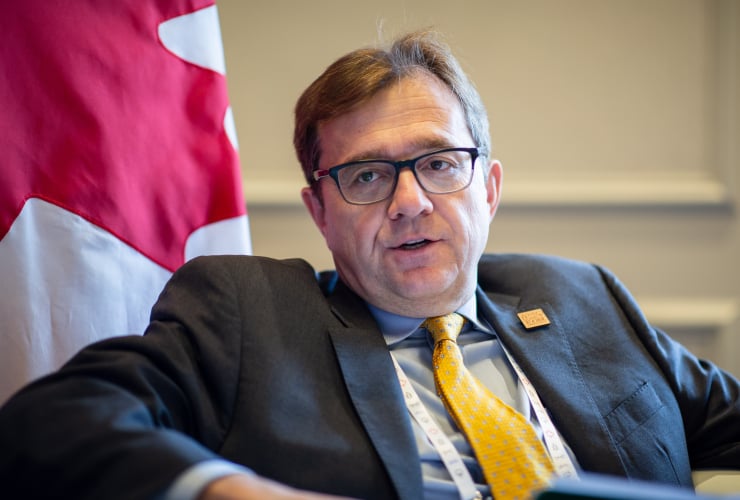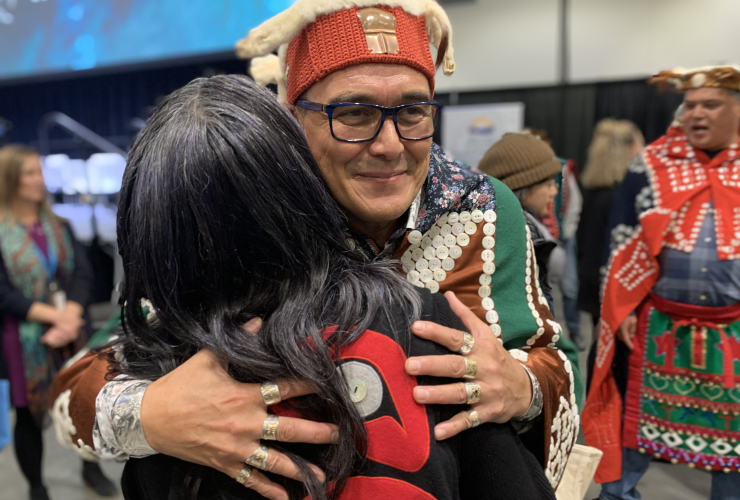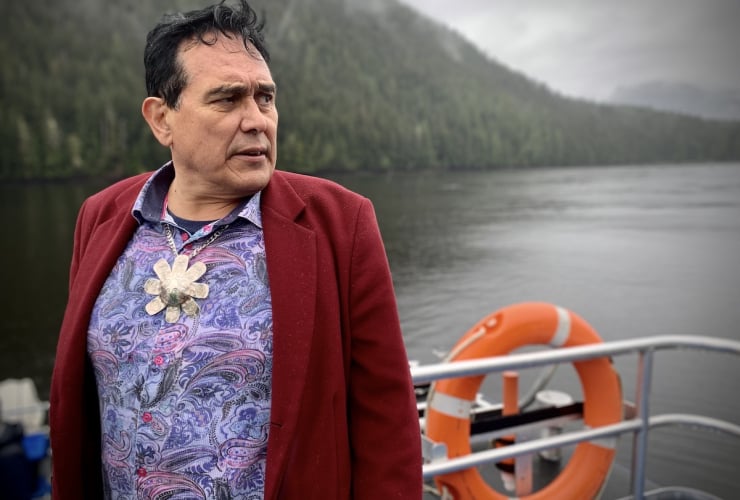A $60-million surge in provincial funding will protect the “extraordinary beauty” of B.C.’s Great Bear Sea, said Premier David Eby on Tuesday.
The Indigenous-led funding allows coastal First Nations to push forward with a vast marine conservation network in their traditional territories to protect marine ecosystems, create new jobs and economic opportunities, and foster sustainable fisheries and tourism, the premier said.
Also known as the Northern Shelf Bioregion, the area spans the coast from Quadra Island north to the Alaska border and includes Haida Gwaii and B.C.’s central coast.
Often referred to as the "Galapagos of the North," the region's waters and lands have been stewarded by First Nations for millennia, Eby noted.
“This grant will provide stable funding for First Nations or coastal marine conservation projects, and [the ability to] work on those projects for years and years to come,” Eby said.
Rich in ecological and cultural values, the Great Bear Sea includes a wealth of habitats like open ocean, rich estuaries, dense kelp forests, rare coral and sponge beds and fjord systems that nourish marine biodiversity and coastal communities.
Fifteen First Nations, the province and the federal government reached a milestone agreement in February to create a vast network of marine protected areas (MPAs) along two-thirds of Canada’s West Coast after nearly two decades of planning and negotiations.

The funds are expected to leverage a further $200 million from the private sector and build on recent grants from the federal government, Eby said.
First Nations Guardian programs — the nations’ stewardship teams that act as eyes and ears in their territories — will expand to monitor, protect and manage marine protected areas, he said.
The financial support administered by Coast Funds will build on the past success of the Great Bear Rainforest — an unprecedented initiative that saw Indigenous stewardship paired with long-term conservation financing, said Dallas Smith, president of the Na̲nwak̲olas Council.
The formula has protected 6.4 million hectares of land and created more than 1,100 jobs, Smith stressed.
“For far too long, people thought First Nations were simply part of ecosystems,” he said.
“Over the years, we've illustrated how healthy First Nations communities make healthy ecosystems.”
First Nations involved in the MPA network are coastal peoples, he noted. Closing the circle with the province and federal governments to conserve ocean areas vital to the Great Bear Rainforest ecosystem is a tremendous step forward, said Smith.
“It’s a great opportunity to be here today, to look at a future that will bring 2,000 full-time jobs in the marine environment and bring forward an MPA strategy endorsed by the province of British Columbia, the government of Canada and coastal First Nations,” Smith said, adding the nations involved want to finalize the marine conservation strategy by June 2024.
The benefits of investing in nature conservation, Indigenous communities and leadership are significant, said Eddy Adra, CEO of Coast Funds.
There’s been a four-to-one return on B.C.’s original $30-million investment 15 years ago to support the Great Bear Rainforest and create Coast Funds — a groundbreaking, not-for-profit Indigenous-led conservation and economic development fund, he said.
First Nations and Coast Funds increased the original amount to $110 million with investments from the federal government and private sector, and financed more than 450 conservation, stewardship and economic development projects in the region, he said.
“Those investments have brought nearly $300 million in additional funding and investments to the region,” Adra said.
The result is more than 120 new and expanded businesses, conservation successes, and the protection of language and culture that benefit the entire coast, he noted.
K̓áwáziɫ Marilyn Slett, president of Coastal First Nations and chief of Heiltsuk Tribal Council, agreed, saying the health of oceans and coastal ecosystems is inseparable from people and communities.
“The province’s support will help us set a new standard for ocean conservation and collaborative management,” Slett said.
Working together will produce a blueprint to protect ecosystems based on indigenous knowledge and western science, she added.
“We can create a legacy of sustainability, as well as ensuring that future generations of our communities, the province and the country inherit a planet that thrives with the richness of our oceans.”
Rochelle Baker / Local Journalism Initiative / Canada’s National Observer







Comments